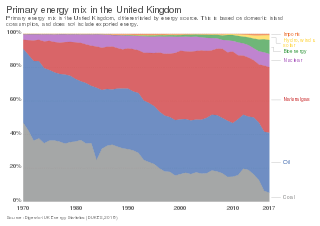A monopoly, as described by Irving Fisher, is a market with the "absence of competition", creating a situation where a specific person or enterprise is the only supplier of a particular thing. This contrasts with a monopsony which relates to a single entity's control of a market to purchase a good or service, and with oligopoly and duopoly which consists of a few sellers dominating a market. Monopolies are thus characterised by a lack of economic competition to produce the good or service, a lack of viable substitute goods, and the possibility of a high monopoly price well above the seller's marginal cost that leads to a high monopoly profit. The verb monopolise or monopolize refers to the process by which a company gains the ability to raise prices or exclude competitors. In economics, a monopoly is a single seller. In law, a monopoly is a business entity that has significant market power, that is, the power to charge overly high prices, which is associated with a decrease in social surplus. Although monopolies may be big businesses, size is not a characteristic of a monopoly. A small business may still have the power to raise prices in a small industry.

A natural monopoly is a monopoly in an industry in which high infrastructural costs and other barriers to entry relative to the size of the market give the largest supplier in an industry, often the first supplier in a market, an overwhelming advantage over potential competitors. Specifically, an industry is a natural monopoly if the total cost of one firm, producing the total output, is lower than the total cost of two or more firms producing the entire production. In that case, it is very probable that a company (monopoly) or minimal number of companies (oligopoly) will form, providing all or most relevant products and/or services. This frequently occurs in industries where capital costs predominate, creating large economies of scale about the size of the market; examples include public utilities such as water services, electricity, telecommunications, mail, etc. Natural monopolies were recognized as potential sources of market failure as early as the 19th century; John Stuart Mill advocated government regulation to make them serve the public good.
In economics, specifically general equilibrium theory, a perfect market, also known as an atomistic market, is defined by several idealizing conditions, collectively called perfect competition, or atomistic competition. In theoretical models where conditions of perfect competition hold, it has been demonstrated that a market will reach an equilibrium in which the quantity supplied for every product or service, including labor, equals the quantity demanded at the current price. This equilibrium would be a Pareto optimum.
This aims to be a complete article list of economics topics:

Price discrimination is a microeconomic pricing strategy where identical or largely similar goods or services are sold at different prices by the same provider in different market segments. Price discrimination is distinguished from product differentiation by the more substantial difference in production cost for the differently priced products involved in the latter strategy. Price differentiation essentially relies on the variation in the customers' willingness to pay and in the elasticity of their demand. For price discrimination to succeed, a firm must have market power, such as a dominant market share, product uniqueness, sole pricing power, etc. All prices under price discrimination are higher than the equilibrium price in a perfectly competitive market. However, some prices under price discrimination may be lower than the price charged by a single-price monopolist. Price discrimination is utilised by the monopolist to recapture some deadweight loss. This Pricing strategy enables firms to capture additional consumer surplus and maximize their profits while benefiting some consumers at lower prices. Price discrimination can take many forms and is prevalent in many industries, from education and telecommunications to healthcare.

A public utility company is an organization that maintains the infrastructure for a public service. Public utilities are subject to forms of public control and regulation ranging from local community-based groups to statewide government monopolies.

Scottish Power is a vertically integrated energy company based in Glasgow, Scotland. It is a subsidiary of Spanish utility firm Iberdrola.
The Ontario Energy Board is the provincial regulator of natural gas and electricity utilities in Ontario, Canada. This includes setting rates, and licensing all participants in the electricity sector including the Independent Electricity System Operator (IESO), generators, transmitters, distributors, wholesalers and electricity retailers, as well as natural gas marketers who sell to low volume customers.
The Ramsey problem, or Ramsey pricing, or Ramsey–Boiteux pricing, is a second-best policy problem concerning what prices a public monopoly should charge for the various products it sells in order to maximize social welfare while earning enough revenue to cover its fixed costs.

The Office of Gas and Electricity Markets (Ofgem), supporting the Gas and Electricity Markets Authority (GEMA), is the government regulator for the electricity and downstream natural gas markets in Great Britain. It was formed by the merger of the Office of Electricity Regulation (OFFER) and Office of Gas Supply (Ofgas).

The energy policy of the United Kingdom refers to the United Kingdom's efforts towards reducing energy intensity, reducing energy poverty, and maintaining energy supply reliability. The United Kingdom has had success in this, though energy intensity remains high. There is an ambitious goal to reduce carbon dioxide emissions in future years, but it is unclear whether the programmes in place are sufficient to achieve this objective. Regarding energy self-sufficiency, UK policy does not address this issue, other than to concede historic energy security is currently ceasing to exist.
Rate-of-return regulation is a system for setting the prices charged by government-regulated monopolies, such as public utilities. Its main premise is that monopolies must charge the same price that would ideally prevail in a perfectly competitive market, equal to the efficient costs of production, plus a market-determined rate of return on capital.
Revenue-cap regulation allows the operator to change its prices within baskets of services so long as the change in revenue does not exceed the revenue cap index. This index typically reflects the overall rate of inflation in the economy, the inflation in the operator's input prices relative to the average firm in the economy and the ability of the operator to gain efficiencies relative to the average firm in the economy. Price-cap regulation attempts to do the same thing but for prices, rather than revenue.
The Averch–Johnson effect is the tendency of regulated companies to engage in excessive amounts of capital accumulation in order to expand the volume of their profits. If companies' profits to capital ratio is regulated at a certain percentage then there is a strong incentive for companies to over-invest in order to increase profits overall. This investment goes beyond any optimal efficiency point for capital that the company may have calculated as higher profit is almost always desired over and above efficiency.
The Independent Pricing and Regulatory Tribunal of New South Wales (IPART) is an independent regulatory and pricing tribunal that oversees regulation in water, gas, electricity and transport industries in the Australian state of New South Wales. It was established in 1992 by Government of New South Wales to regulate the maximum prices for monopoly services by government utilities and other monopoly businesses, such as public transport.

United Kingdom enterprise law concerns the ownership and regulation of organisations producing goods and services in the UK, European and international economy. Private enterprises are usually incorporated under the Companies Act 2006, regulated by company law, competition law, and insolvency law, while almost one third of the workforce and half of the UK economy is in enterprises subject to special regulation. Enterprise law mediates the rights and duties of investors, workers, consumers and the public to ensure efficient production, and deliver services that UK and international law sees as universal human rights. Labour, company, competition and insolvency law create general rights for stakeholders, and set a basic framework for enterprise governance, but rules of governance, competition and insolvency are altered in specific enterprises to uphold the public interest, as well as civil and social rights. Universities and schools have traditionally been publicly established, and socially regulated, to ensure universal education. The National Health Service was set up in 1946 to provide everyone with free health care, regardless of class or income, paid for by progressive taxation. The UK government controls monetary policy and regulates private banking through the publicly owned Bank of England, to complement its fiscal policy. Taxation and spending composes nearly half of total economic activity, but this has diminished since 1979.
The building block model is a form of public utility regulation that is common in Australia. Variants of the building block model are currently used in Australia in the regulation of electricity transmission and distribution, gas transmission and distribution, railways, postal services, urban water and sewerage services, irrigation infrastructure, and port access. The Australian Competition & Consumer Commission (ACCC) has stated that it intends to use a version of the building block model to determine indicative access prices for fixed-line telecommunications services. The building block model is so-called because the allowed revenue of the regulated firm is equal to the sum of underlying components or building blocks consisting of the return on capital, the return of capital, the operating expenditure, and various other components such as taxes and incentive mechanisms.
Utility ratemaking is the formal regulatory process in the United States by which public utilities set the prices they will charge consumers. Ratemaking, typically carried out through "rate cases" before a public utilities commission, serves as one of the primary instruments of government regulation of public utilities.
Public utilities in Colombia are operated by private companies and regulated by the government.
Performance-based regulation (PBR) is an approach to utility regulation designed to strengthen utility performance incentives. Thus defined, the term PBR is synonymous with incentive regulation. The two most common forms of PBR are award-penalty mechanisms (“APMs”) and multiyear rate plans (“MRPs”). Both involve mathematical formulas that can lower regulatory cost at the same time that they encourage better performance. This constitutes a remarkable potential advance in the “technology” of regulation. Economic theorists whose work has supported the development of PBR include Nobel prize-winning economist Jean Tirole.









